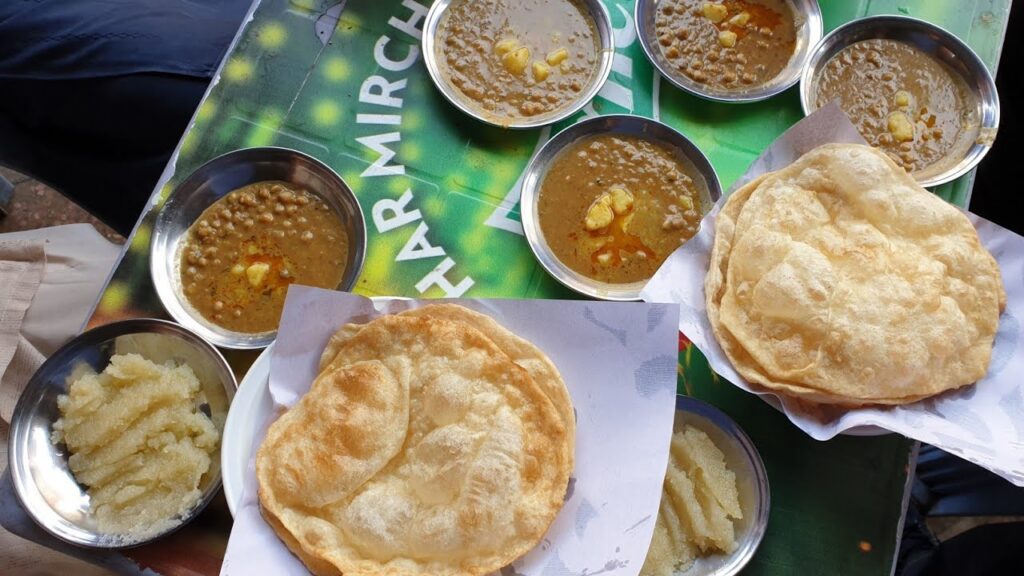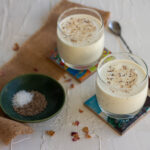Delicious Halwa Puri is one of the most favorite Pakistani breakfasts usually served on weekends and special days. It is a presentation of two major constituents- halwa and puri, this meal is an epitome of India’s rich heritage. Although its origins are not known with certainty, Halwa Puri still remains synonymous with the breakfast in cities like Lahore and Karachi and more recently with Islamabad. This is, in fact, quite a feast to the senses-a veritable explosion of flavors, textures, and aromas.
The Components of Halwa Puri
Delicious Halwa Puri is a three-part dish. Three major parts are puris, halwa, and several side dishes which include chana, or curried chickpeas and aloo ki Bhaji, or spiced potato curry.
1. Puri is fried bread, made from unleavened dough mixed or unmixed with wheat flour or Suji. It goes rolled into small circles, allowed to puff up and brown itself like a gold coin. The outside goes crispy while the inside remains soft in this one vessel dominating every bite of the halwa and curries.

The golden hue of the halwa and melt-in-your mouth texture balances the Savoury flavors of the puri and curries. This sweet dish contains Suji- semolina but gram flour (besan) or lentils can be used in variants.
Makhya Sharn Aakhir (Accompaniments)
Chana (Chickpea Curry): The Savory Chana, hot and sour chickpea curry balances the sweetness of the puri. Made with spices like cumin, coriander, garam masala and tomatoes, this slow-cooked black chickpea, kala chana, has strong flavors which perfectly do the counterbalance the sweet halwa.
Aloo Ki Bhujia (Spiced Potato Curry): This is another side dish that one traditionally has with the archetypal Halwa Puri. Spiced potato curry is what it is, remarkably like how one might describe a potato curry. Boiled potatoes go into being sautéed with onions, tomatoes, and a good many spices: turmeric, red chili powder, mustard seeds-but not to mention on top of this some liberal strokes with an emulsifier. Savory, soft, and characteristically comforting.
Achar (Pickle): Sometimes, a small serving of achar is included, and mostly only in small quantities. Achar is a spicy and sour pickle that in South Asia can be prepared using many different vegetables or fruits. Its most usual use is a dish that would be enhanced with spicy pickles and enjoy with Lassi.
Cultural Importance of Halwa Puri
Delicious Halwa Puri is a cultural phenomenon more than a dish. Over a special family get together that could be because of Eid or out of one’s craving on Sunday, the delight of Halwa Puri goes much beyond just being a scrumptious dish. Hailing together with family is a sweet memory because of this tasty dish, followed usually by either a glass of tea or lassi, a yogurt-based drink. Most of these cities have stalls everywhere; specially food markets seem busy, as all the cities are.

It seems to galvanize the very diversified, yet very Pakistani, society, as every Pakistani comes to enjoy this great, classic breakfast. Street vendors in Lahore or Karachi begin their day during early mornings, preparing their puris in big cauldrons and serving them hot to eager customers. It is quintessential to have this at a street-side vendor because the experience adds a whole layer of authenticity and nostalgia to this meal.
Art of Making Halwa Puri
Making Delicious Halwa Puri requires a serious amount of love. One must almost brush every detail; the puris must be rolled out to the perfect thickness before frying in extremely hot oil. However, the chana and aloo curries take hours of slow cooking so that spices can mingle with each other to produce a rich and delicious dish. If one is making halwa, then regular stirring is necessary while cooking so as not to form lumps, and to keep it smooth.

However, the effort is well rewarded despite the challenging work. However, such a dish easily can be altered to the personal taste buds of an individual home cook, whether it is the measure of sweetness in the halwa or spice mix in the curries.
Variations of Halwa Puri
Though one comes across halwa so often with puris, there are very many local and even house variations. Some prefer besan halwa made from gram flour; some like it a little less sweet compared to semolina halwa, and the variety of puri may be accompanied by any number of curries depending on local taste. For instance, it comes in Punjab along with a form of chickpea curry that has a further bolder and spicy tone; in Sindh, variations are found in accompaniments and can include more vegetables.
Conclusion
Delicious Halwa Puri is more than a meal. It is bringing family, tradition, and community into one. No matter how busy the street stall or if you prepare it carefully at home, the meal brings a good feeling on every table. And it makes me remember some common things about life in the sharing and relishing of delicious food enjoyed by loved ones, pleasure from every favorable piece surrounding, savoring each one, and also the sweetness being established for savoring taste and spice hitting directly at the heart to serve in an ingredient which makes this Halwa Puri a meal full and satisfying, for it will occupy an ever-precious space within Pakistani culinary heritage forever.
FAQS
How is Halwa Puri eaten?
Families get together for a relaxed lunch around this time, which frequently lasts into the afternoon. Eating Halwa Puri as a group, with everyone dipping their puris into communal bowls of curry and halwa, promotes unity and friendship.
What is the history of Halwa Puri?
Halwa puri, which has its roots in the Northern Indian subcontinent, quickly became well-known throughout Pakistan and a popular breakfast dish. including deep-fried puris, tangy and mildly spicy potato curry, savory chickpea gravy, and semolina halwa.
Who is the founder of halwa?
‘Kitab al-Tabikh’ (The Book of Dishes), published in Arabic in the 13th century by Muḥammad ibn al-Ḥasan Ibn al-Karīm, has the earliest documented recipe for Halwa, according to food historians’ findings. It lists eight types of Halwa along with their recipes.
What does halwa symbolize?
There are many varieties, but the most common is sooji ka halwa, which is made using dry fruits, milk, sugar, ghee, and semolina. Since this halwa is supposedly Lord Vishnu’s favorite meal, it is extremely sacred and required as a prashad dish in temples and other religious ceremonies.
Which halwa is famous?
A traditional dessert from Tamil Nadu, India’s Tirunelveli district called Tirunelveli halwa. Cardamom and saffron are used to flavor it, and it is created with wheat flour, ghee, sugar, and milk. Dating back to the 18th century, the dish has a lengthy history. The distinct flavor and texture of tirunelveli halwa are well-known.



Pingback: MOST DELICIOUS LASSI - THE KITCHEN